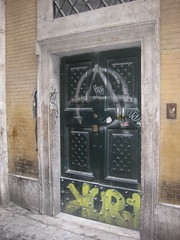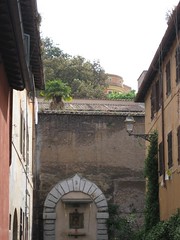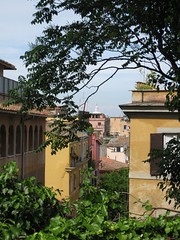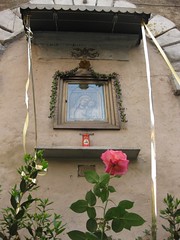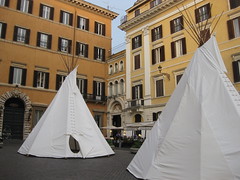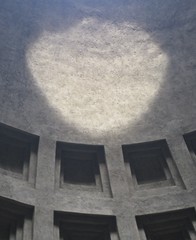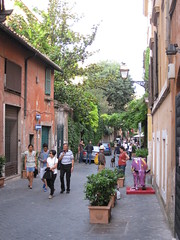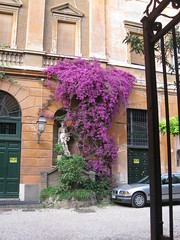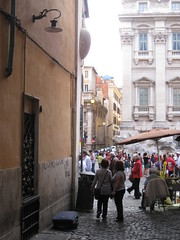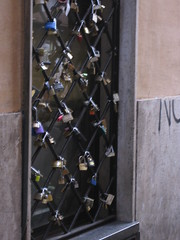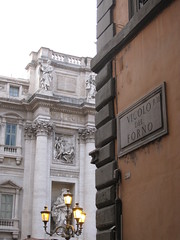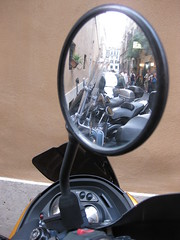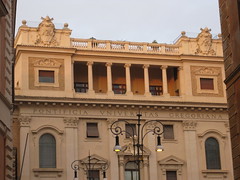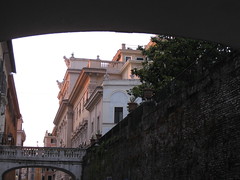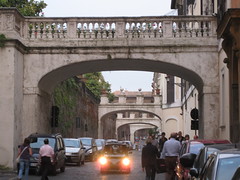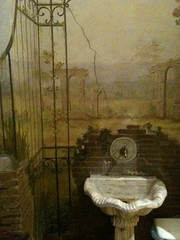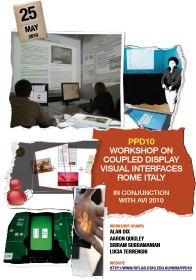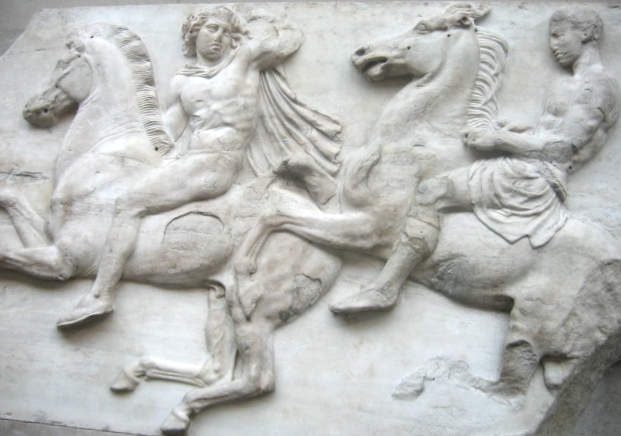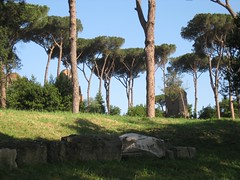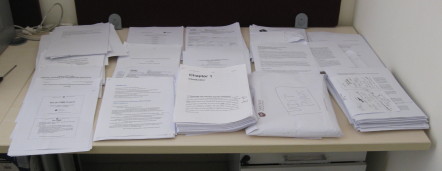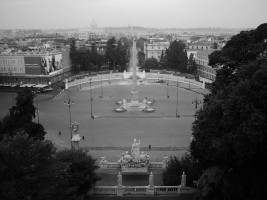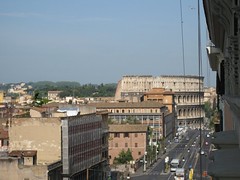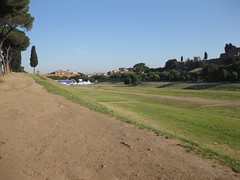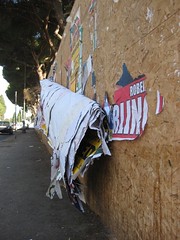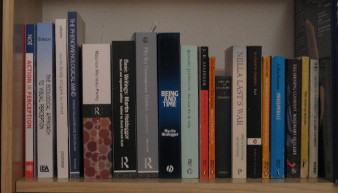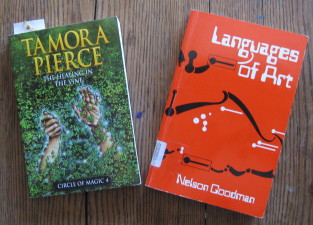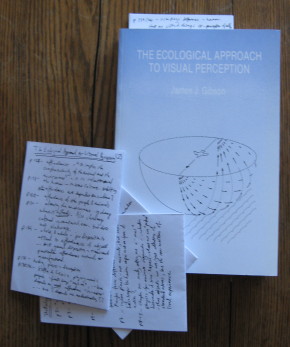I know Rome well, but I still see new things every time I visit, and sometimes the old things from a different angle, or perhaps from some of the lesser trod ways.
A week ago I was there for the AVI conference and some other events (see previous post). I am not a city lover preferring wild places, the sea, hills and margins of existence. However, Rome is different, partly because I was introduced to Rome by Romans (of the modern variety), and saw it through their eyes, but partly because it is a city itself on the margins of civilisation and decay. I would not have liked ancient Rome with its bureaucracy and mannered civil life, but this Rome we have now, that survived the Visigoths, flowered in the Renaissance, then struggled through war and invasion from the outside, and internal conflicts from within, where ancient buildings and bustling modern life sit side by side, where humanity is dense, but nature always nestling in the interstices, and ready to reassert itself. That is beautiful.
A week ago on Saturday I had a ‘day off’, a gap between the end of the AVI conference on the Friday and travelling to Milan on the Sunday. It had been a good week, not just from an academic point of view, but also seeing old friends both in the conference and outside, including a lovely meal at the lake near Castello Gandalfi with Roberta, Manuela, Francesco and others.
Of course an academic day off has its own meaning, and I had a relaxed breakfast on the roof terrace looking out over the roof tops to the Colloseum … while reading papers to review. Then after retiring to my room for some hours to type of the reviews, wandered across to the Trastevere, where there are the best pizzas, to of course review some more papers over lunch, then wandering as far as an Internet cafe near the Ponte Sisto to upload it all. However, at 5pm I eventually laid aside my computer and decided it was time to just wander!
One of my favourite walks in Rome is to start at the north in Piazza del Popolo and then wander south towards Piazza Venezia. So many familiar sights not far either side of that axis. From Ponto Sisto a meandering way through backstreets led through Piazza Campo de Fiori, and Piazza Novona, past the Pantheon and Piazza Colonna on to Via del Corsa up towards the Piazza del Popolo. In Campo de Fiori I found that it looked very different when viewed from behind the flower stands, and just off Via del Corso an American Indian encampment.
From Piazza del Popolo, the most obvious route is straight down Via del Babuino towards the Piazza di Spagna. However, last year Manuela and Francesco introduced me to the Via Margutta, which runs parallel and set back from bustling Babuino. At the time it was itself quite full as it was the annual street exhibition of 100 Painters, but last week, only yards from the tourist and traffic filled streets, a small oasis with just the odd Italian wandering past its old houses, small galleries and tumbling greenery.
From there back onto the main thoroughfares, through Piazza di Spagnia, and the flower filled steps still seem lovely despite the tourists and crowds, although also special if you visit them early in the morning, as I did a few years ago, when they are empty all bar a few bin bags awaiting collection.
Fontana di Trevi is as in every guidebook, splendid, glorious, and actually bigger than it looks in pictures. The small square containing the fountain is always awash with people. However, imagine standing facing the fountain and then turnaround, facing away from the statues, the flowing water, the postcard and trinket sellers. Away to your right is a tiny alleyway, vicolo del Forno. It is too small to be named on most maps, it goes nowhere and consequently I had never turned into it before.
The narrow opening part shielded by the roast chestnut seller cuts out much of the noise, and its unprepossessing appearance puts off any visitors. But, I was not the first person to wander in. A short way within is small side window to a shop, covered with wrought iron crossbars from the days before toughened glass and security alarms. On each bar there were tiny padlocks, and on the padlocks more padlocks, tumbling from one another, like rock plants growing from walls. Each padlock had names written on them, love trysts.
When I asked afterwards, Roberta told me there was a bridge Ponte Milvio, which, after a famous film popularised the idea, is so heavily hung with padlocks like this that it damaged some of the ironwork. Lovers affix the padlock then throw the key into the Tiber symbolising unbreakable love. Looking now on the web I can see that these love padlocks are found at sites all over the world, even in Glasgow. I assume Fontana di Trevi is filling with small keys alongside the more numerous coins. However, unlike the very public display at Ponte Milvio, this small alley is so well hidden that perhaps only those seeking a secluded embrace away from the crowds find it; certainly Roberta, a native Roman, did not know it existed.
Now charmed by the out of the way, I decided to abandon my normal route back to via Corso and on to Piazza Venezia and instead took roads going south, slightly to the east of Corso, but not so far as the route up to the Quirinale. This led me to Via Pilotta, a glorious small road, like a chasm with tall buildings to the right and a high retaining wall to the left with the hints of a garden beyond peeking over its top. Like a river canyon it is also spanned by numerous small bridges, presumably allowing those in the houses to the right to get to the forbidden gardens to the left without descending to the street and rabble below.
On Pilotta there is a single ristorante Le Lanterne, a perfect place to sit as the light fades on Rome … and even here it is the hidden places that are perhaps most special.


